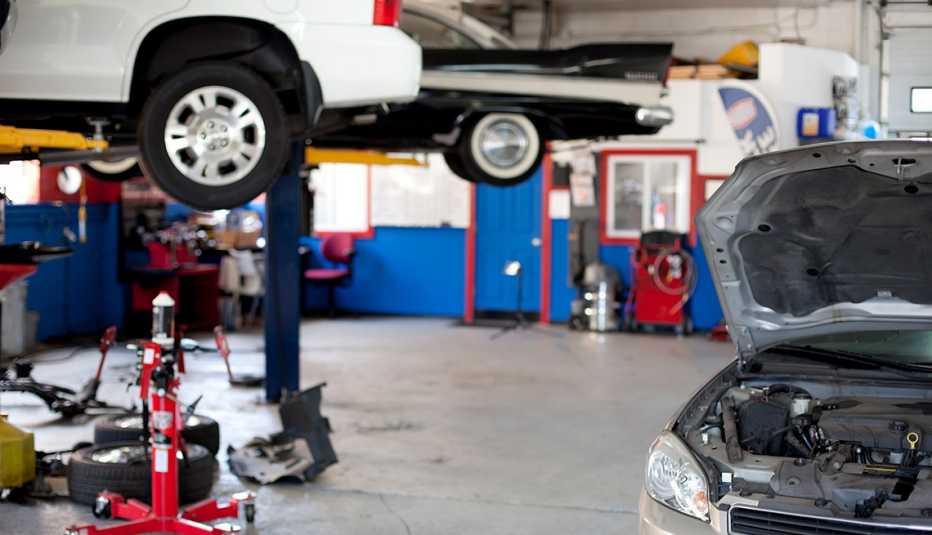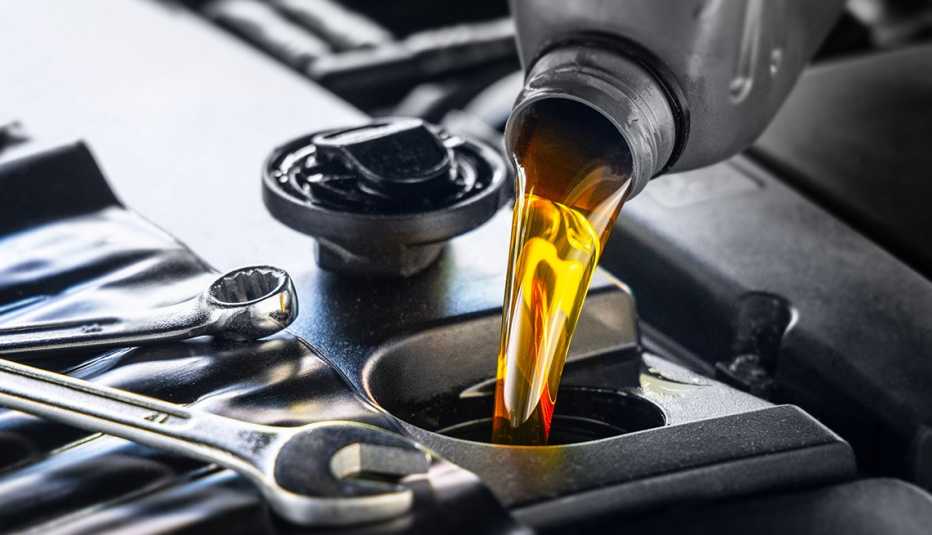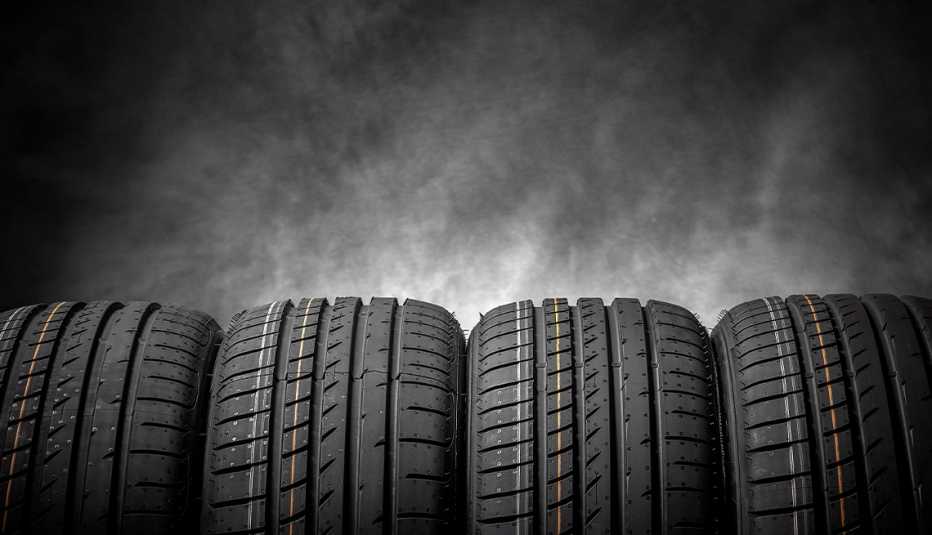Staying Fit


With regular maintenance, many of today’s cars and trucks can run for several hundred thousand miles. And since the average price of a new car sold in America now approaches $50,000, keeping your vehicle running as long as possible just makes good financial sense.
But the key is sticking to the “regular” in regular care, as well as being proactive with small issues so that they don’t compound into four-figure problems. This means not only paying attention to your car, but planning for its maintenance the way you might for a grandchild’s college education: consistently setting money aside and considering it a sunk cost.
This AARP smart guide provides actionable advice on how to maintain your car and create a maintenance budget, including what to expect when it comes to the longevity and reliability from various brands and models.


BEFORE YOU BUY
1. Track longevity
Certain manufacturers, vehicle types and models have a propensity for longevity, which can help in making your purchase, says Steven Lang, a used car broker with an eye toward buying and selling vehicles that are undervalued and long-lasting. Lang runs the Long Term Quality Index, a 10-year-old database that includes independently gathered reliability data on more than 4 million vehicles. (Similar metrics are collected by Kelley Blue Book’s Service Advisor and Consumer Reports’ Auto Reliability Brand Rankings.) In his research, Lang has found that there are four brands and categories of vehicles that tend to run the longest without major issues. These include the following:
- Chevrolet: Silverado, Tahoe, Suburban, Corvette
- Ford: F-Series Pickup, Mustang
- Honda: Accord, Civic, Pilot
- Toyota: All vehicles, except GR86 and Supra
2. Focus on a long-term model
According to Lang, the cars mentioned above are long-lasting for a variety of similar reasons. They are best selling vehicles with generous life spans, meaning hundreds of thousands or millions have been produced in any given generation, giving manufacturers time to iterate powertrains and work out any issues. And their popularity means that they are easy to service, which allows owners ready access to maintenance and repair.


AARP Membership— $12 for your first year when you sign up for Automatic Renewal
Get instant access to members-only products and hundreds of discounts, a free second membership, and a subscription to AARP the Magazine.
3. Watch the options
According to Tony Quiroga, editor-in-chief of Car and Driver, the world’s largest automotive enthusiast publication, simplicity tends to track with longevity; the fewer parts that exist on something, the less opportunity there is for failure. “The more things you add, the more complication you add, the more problems you potentially present,” Quiroga says. He should know. He and his staff test hundreds of cars, car parts and automotive products each year, as well as conduct long-term tests on contemporary vehicles, running them for more than 40,000 miles and monitoring issues that arise. That said, “most people probably don't want to buy a car with a manual transmission and hand-crank windows. They want the features that make getting to 200,000-plus miles pleasant,” Quiroga says. Like everything in life, it is a trade off.
4. Choose an under-stressed engine
According to Lang, the longest-running vehicles tend to have engines that are larger and naturally aspirated (not turbocharged) V8s and V6s. These less complicated motors are easier to service, and generally operate without working too hard. This simply means that their mechanical components are not overstressed during regular use. Like a human, a less stressed motor will generally last longer without fundamental issues.


STARTING STRONG
5. Get to know the owner’s manual
All of our experts suggest that quality long-term maintenance begins with a careful perusal of the service section of the owner’s manual. This section tracks the mileage (such as every 10,000 miles driven) and timing (such as once every two years) milestones at which the manufacturer recommends preventive maintenance. Treat this as your guide. “Find out: When does the manufacturer say I should have an oil change, a tire rotation? When should all the fluids be changed?” says David Bennett, a National Institute for Automotive Service Excellence (ASE) certified master technician and the repair systems manager for the American Automobile Association (AAA). These timelines are based on careful testing and awareness of a vehicle’s capabilities, durability and tolerances. “The people that created these [guidelines] are the engineers and the people that work for the manufacturer,” Quiroga says. “They know what it takes to maintain the car.”
6. Join a community
Nearly every car make or model has an enthusiasts’ online club or community dedicated to sharing user tips. Check out places like Reddit, Autoguide or CarTalk, or just search “Car Forum” and your car’s name on search engines to find yours. They’re full of tips. Once you’ve located your affinity group online, it’s easy to find recommendations. “Look at the enthusiast forum’s ‘Recommendations’ section,” Lang says. These conversations will be full of suggestions for how to pick the right model, how to option (or not option) it for longevity, what its strengths or weaknesses may be, and how to mitigate issues.
7. Establish a relationship
Find a repair facility you like, and stick with it. Then they’ll get to know you and, more importantly, your car. According to Bennett, it’s like your relationship with your primary care physician. “You don’t want to go looking for a doctor when you have a problem,” Bennett says. “You want to know, Hey I already trust this person. I want to go to them because they've already been taking care of me.”
8. Take detailed notes
You know your car’s behavior best, because you drive it regularly. If you begin to notice that something is off in the way it sounds or behaves, Bennett suggests making notes (when you’re safely parked). When does the issue occur? Under what conditions? Then, when you take it to the shop, you have detailed information to present. Again, it’s much like your relationship with your physician. “The doctor is going to ask you a series of questions, because it's going to lead them down the path to figure out what is your proper diagnosis, so they can treat you. Same thing with the car,” Bennett says. Being open and specific with the repair facility will save you money and time, and result in better care.
9. Beware of over-servicing
According to Quiroga, car dealerships will sometimes set up their own service requirements for a vehicle that go above and beyond what manufacturers recommend in the owner’s manual. These can often include unnecessary practices like throttle body cleaning or additional inspections, which will leave your car over-serviced. This is not harmful to the car. “It doesn't hurt to over-maintain the car,” Quiroga says. “It just ends up costing a ton of money.” Money that could be better used conducting useful and necessary maintenance. Stick to the manual’s recommendations and you should be fine.







































































More AARP Smart Guides
Find the Best Vacation Rental
28 tips on planning — and enjoying — time away from home
Efficiently Clean Your Home
Room by room, now’s the time to tackle your ambitious cleaning to-do list
Manage Seasonal Allergies
Achoo! How to understand and treat your symptoms